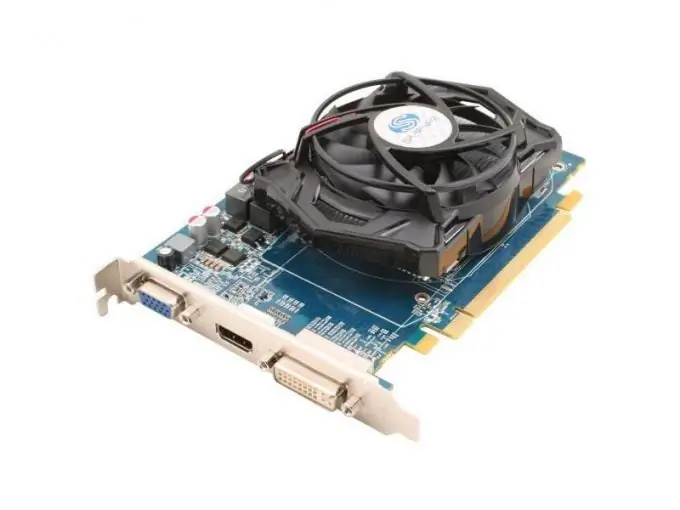The video card is an important piece of PC hardware. It offloads the CPU when displaying heavy video on the screen and processes video information better and faster than stone. A user, when he is configuring the system or thinking about replacing a video card, needs information about the graphics adapter already installed in his computer.

How to get information about the video card in Windows 7 using standard system tools
It's safe to say that all the information you need becomes available in just a couple of mouse clicks. Windows 7 is designed to be able to instantly provide the user with detailed information about all the hardware on the computer, including the graphics card.
Right-click on the desktop and select "Screen Resolution" from the context menu, and then - "Advanced Settings". In the dialog that opens, you can see what the available video card is. Firstly, its name will be displayed, and secondly, the main characteristics will be indicated: the type of microcircuit and DAC, the available amount of graphics memory, video memory and system memory.
Click on the "List of all modes" button. A pop-up window will display all video modes that the video card supports. Also, be sure to open Properties to learn more about the video adapter you have installed and which driver is used to control it. The Windows display properties show where the video adapter is located. If something like PCI Slot is displayed, it means that it is a removable module, and not integrated into the motherboard. Most often, Intel video cards are integrated, but AMD or Nvidia can be both integrated and standalone.
Diagnostics
If your video card is having problems, you can use the built-in DirectX tool. To do this, go to the main menu (the "Start" button) and enter the dxdiag command in the search text bar. Click on the link that appears in the list, or simply press Enter. The dialog box that opens will have several tabs. The general displays information about the video card and DirectX version.
Check your video adapter settings to ensure that options such as hardware acceleration Microsoft DirectDraw, Direct3D, and AGP texture acceleration are enabled. If they are not enabled, then some programs will not work correctly or very slowly.
To enable these types of acceleration, go to the main menu again, then open the "Control Panel", then go to the "Appearance and Personalization" section. In it, run the command "Adjust the screen resolution". Then go to "Advanced options" and go to the tab "Troubleshoot" - "Change settings". If prompted for an admin password, enter it to confirm. After that move the "Hardware acceleration" slider to the maximum. If this feature is disabled, then the device driver might need to be reinstalled.






